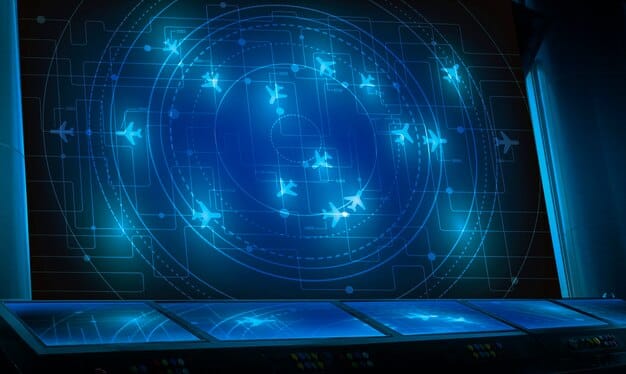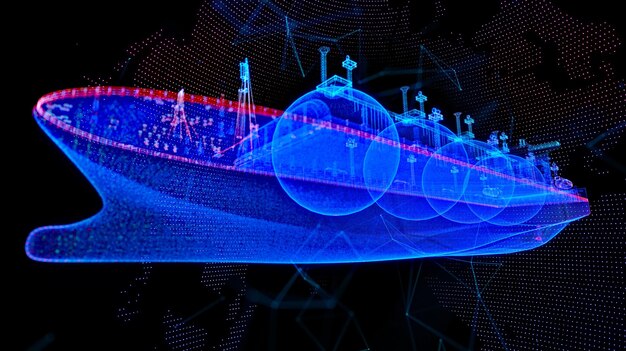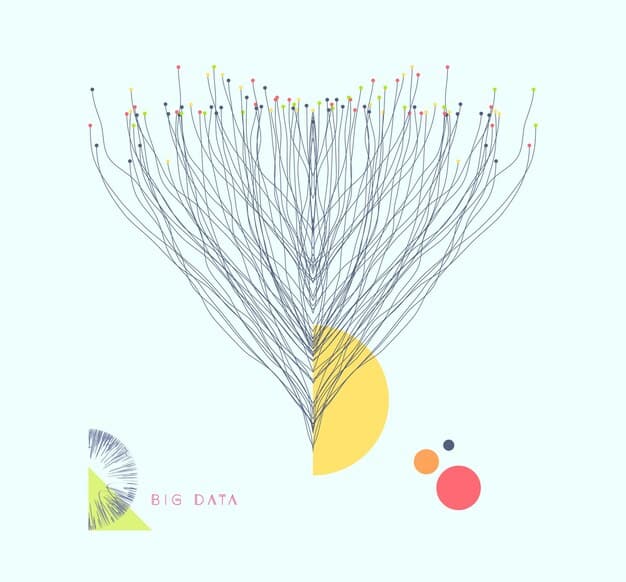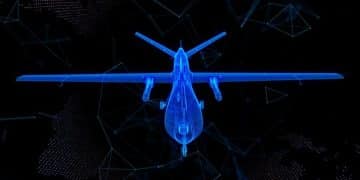US Military Quantum Computing: Key Applications & Investment

The US military’s investment in quantum computing is poised to revolutionize defense capabilities, offering potential applications across secure communications, advanced sensing, artificial intelligence, and logistics through unparalleled computational power and complex problem-solving abilities.
The landscape of modern warfare and defense is on the brink of a profound transformation, driven by advancements in cutting-edge technologies. Among these, US Military’s Investment in Quantum Computing: What are the Potential Applications? stands out as a particularly disruptive force. This isn’t merely an incremental upgrade; it represents a paradigm shift with the potential to redefine strategic advantage, operational security, and even the very nature of conflict. As nations globally vie for technological superiority, understanding the implications of quantum computing for military applications becomes paramount.
Understanding the Quantum Computing Paradigm Shift
The notion of quantum computing often conjures images of science fiction, yet it is rapidly progressing from theoretical concept to tangible reality. Unlike classical computers that store information as bits (either 0 or 1), quantum computers leverage the principles of quantum mechanics—superposition and entanglement—to process information as qubits. This fundamental difference unlocks an exponential leap in computational power, enabling the solution of problems currently intractable for even the most powerful supercomputers.
Superposition allows a qubit to be both 0 and 1 simultaneously, dramatically increasing the amount of information that can be stored and processed. Entanglement, on the other hand, describes a phenomenon where two or more qubits become linked, such that the state of one instantly influences the state of the others, regardless of distance. These properties form the bedrock of quantum computing’s immense potential, particularly in fields requiring the simulation of complex systems or the optimization of vast datasets. The US military recognizes this transformative power and is actively channeling resources into its development.
At its core, the military’s interest stems from the ability of quantum computers to tackle challenges beyond classical computational limits. This includes breaking or creating advanced encryption, simulating new materials at the atomic level, optimizing logistical networks with unprecedented efficiency, and developing next-generation AI and machine learning algorithms. The strategic implications are vast, touching every facet of defense, from intelligence gathering to battlefield operations.
From Theory to Application: The Need for Quantum
The transition from theoretical understanding to practical military applications requires significant investment in research and development. The US military is particularly interested in leveraging quantum’s unique capabilities to maintain its technological edge. For instance, traditional cryptographic methods, which underpin secure military communications, are theoretically vulnerable to sufficiently powerful quantum computers. This threat, often referred to as “quantum supremacy,” drives the imperative for quantum-safe cybersecurity solutions.
Beyond defensive measures, quantum computing offers offensive capabilities, such as advanced signal processing for reconnaissance and surveillance, or the ability to model complex electromagnetic phenomena. The challenge lies not only in building these machines but also in developing the algorithms and software that can effectively harness their power for specific military needs. This involves a highly specialized workforce and a deep understanding of both quantum physics and military operations.
Ultimately, the goal is to integrate quantum technologies seamlessly into existing and future defense systems. This integration will not happen overnight and requires a phased approach, starting with fundamental research, moving to prototype development, and finally, to operational deployment. The journey is complex, but the potential rewards—unprecedented dominance in critical domains—make the investment a strategic imperative for national security. Quantum computing is not just a technology; it is a new frontier in military capabilities.
Revolutionizing Secure Communications and Cryptography
One of the most immediate and impactful applications of quantum computing for the US military lies in the realm of secure communications and cryptography. The digital backbone of modern military operations relies heavily on encryption to protect sensitive data, intelligence, and command-and-control signals from adversaries. However, the advent of quantum computers poses a significant threat to these traditional cryptographic methods. A sufficiently powerful quantum computer could theoretically break many of the standard encryption algorithms used today, such as RSA and ECC, rendering secure communications vulnerable.
Quantum Cryptography: A New Era of Security
The military’s investment in quantum computing addresses this looming threat head-on by developing **quantum cryptography**. This field explores methods that are inherently resistant to quantum attacks. One prominent example is Quantum Key Distribution (QKD), which uses the principles of quantum mechanics to establish cryptographic keys in a way that any attempt at eavesdropping would be immediately detectable. This offers a level of security unattainable with classical methods.
* **Unbreakable Key Exchange:** QKD ensures that if an eavesdropper tries to intercept the quantum key, the quantum state of the photons will change, alerting sender and receiver to the intrusion.
* **Tamper-Proof Communications:** This allows for the establishment of truly secure communication channels, vital for sensitive military intelligence and command directives.
* **Future-Proofing Data:** Investing in QKD now helps safeguard classified information and military communications against future quantum computing capabilities of adversaries.
Beyond QKD, research is also focused on **post-quantum cryptography (PQC)**, which involves developing new cryptographic algorithms that can run on classical computers but are designed to be resistant to attacks from quantum computers. The National Institute of Standards and Technology (NIST) is actively standardizing several PQC algorithms, and the US military is keen to adopt these as they become available. This dual approach—exploring both quantum-native solutions like QKD and quantum-resistant classical algorithms—ensures a robust and layered defense strategy against future cyber threats.
Safeguarding Critical Infrastructure
The implications extend beyond communications to the protection of critical military infrastructure and data repositories. Quantum-resistant encryption is essential for securing everything from personnel records and logistical databases to complex weapons systems and satellite networks. The ability to guarantee the integrity and confidentiality of this information is paramount to maintaining operational effectiveness and strategic advantage. The military is exploring how quantum-safe protocols can be integrated into existing and future systems, considering the vast scale and complexity of its digital footprint.
This proactive approach to securing communications and data is not just about defending against quantum attacks; it’s about establishing a new standard of cybersecurity that can withstand the computational power of the next generation. The development and deployment of quantum-proof cryptographic solutions are considered a top priority, ensuring that the US military’s most sensitive information remains protected in an increasingly quantum-aware world. This strategic investment underscores the understanding that future military superiority will be inextricably linked to cryptographic resilience.
Advanced Sensing and Surveillance Capabilities
Another compelling area for the US military’s quantum computing investment is in the advancement of sensing and surveillance technologies. Quantum phenomena, such as superposition and entanglement, can be harnessed to develop sensors with unprecedented precision, sensitivity, and range. This holds the potential to revolutionize intelligence gathering, target identification, and environmental monitoring, providing a significant tactical and strategic advantage.
Quantum sensors operate on fundamental quantum principles, making them inherently more sensitive to subtle changes in physical quantities like magnetic fields, gravity, and time. This enhanced sensitivity translates into the ability to detect fainter signals, penetrate deeper into challenging environments, and collect more accurate data than conventional sensors.
Traditional military sensors often face limitations in noisy environments or when attempting to detect stealthy targets. Quantum sensors, by leveraging their unique properties, can overcome many of these challenges, offering significant improvements in various domains. For example, quantum magnetometers can detect minuscule magnetic anomalies, potentially revealing the presence of submarines or underground facilities that would be invisible to current technologies.
Precision Navigation and Timing (PNT)
A critical application of quantum sensing is in **Precision Navigation and Timing (PNT)** systems. The reliance on GPS, while effective, carries inherent vulnerabilities, particularly in contested environments where GPS signals can be jammed or spoofed. Quantum inertial navigation systems (INS) offer a robust, self-contained alternative that does not rely on external signals.
* **Quantum Clocks:** Extremely precise quantum clocks can maintain highly accurate timekeeping, essential for synchronized military operations and secure communications, even when GPS is unavailable.
* **Quantum Accelerometers and Gyroscopes:** These devices can measure motion and orientation with incredible accuracy, allowing for drift-free navigation of vehicles, aircraft, and missile systems without external reference.
* **Resilience in Denied Environments:** Quantum PNT systems can provide reliable navigation in environments where GPS is disrupted or denied, maintaining operational continuity in critical missions.
This capability is particularly vital for special operations, stealth platforms, and long-duration autonomous missions where external signal dependency is a significant risk. The integration of quantum PNT would enhance the resilience and effectiveness of military assets across all domains.
Enhanced Imaging and Detection
Quantum entanglement can also be used to develop **quantum radar and imaging systems** that offer superior performance in difficult conditions. Unlike classical radar, quantum radar could theoretically detect stealth aircraft or subsurface objects with greater efficiency and lower power consumption, by exploiting quantum correlations between emitted and received photons.
Furthermore, quantum **gravimeters** capable of precisely mapping subtle variations in Earth’s gravitational field could aid in underground mapping, mineral detection, and even the identification of hidden tunnels or bunkers. The ability to “see” through solid obstacles or detect previously undetectable anomalies provides a powerful new tool for intelligence and reconnaissance. The military’s investment in these areas is aimed at providing an unparalleled situational awareness and targeting capability, fundamentally changing how information is gathered and acted upon in the battlefield.
Optimizing Logistics and Supply Chains with Quantum Algorithms
The sheer complexity of military logistics and supply chain management presents a formidable challenge that quantum computing is uniquely positioned to address. Moving vast quantities of personnel, equipment, and supplies around the globe efficiently and securely requires optimizing countless variables under dynamic and often unpredictable conditions. Classical computing struggles with the combinatorial explosion of possibilities in such scenarios, but quantum algorithms could offer breakthroughs.
Military logistics involves intricate networks of transportation, storage, distribution, and maintenance. From deploying troops and equipment across continents to ensuring a continuous flow of critical spare parts to remote outposts, the optimization problems are immense. Quantum computers’ ability to explore vast solution spaces simultaneously makes them ideal for tasks like route optimization, resource allocation, and inventory management.
Transforming Resource Allocation and Scheduling
One of the most direct applications lies in **resource allocation and scheduling**. Quantum optimization algorithms could rapidly determine the most efficient routes for convoys, planes, or ships, considering factors like fuel consumption, transit time, security risks, and capacity constraints. This could lead to substantial cost savings, faster deployment times, and reduced exposure to threats.
* **Dynamic Route Optimization:** Quantum algorithms can instantly re-calculate optimal routes in response to real-time changes, such as unexpected weather, enemy activity, or supply shortages.
* **Personnel Deployment:** Optimizing the deployment and rotation of military personnel, considering skill sets, availability, and mission requirements, can be executed with unprecedented precision.
* **Asset Management:** Efficiently managing the positioning and utilization of high-value assets like aircraft, ships, and specialized equipment to maximize operational readiness.
The benefits extend to maintenance schedules and supply chain resilience. Predicting equipment failures, optimizing maintenance windows, and ensuring the timely delivery of spare parts are all problems that can be significantly improved with quantum-enabled predictive analytics. This reduces downtime, extends equipment lifespan, and enhances overall operational readiness.
Predictive Analytics and Demand Forecasting
Quantum computing can also revolutionize **demand forecasting** within the military supply chain. By analyzing massive datasets—including historical consumption, geopolitical events, and environmental factors—quantum machine learning algorithms could provide highly accurate predictions of future supply needs.
The ability to accurately predict demand for everything from munitions to medical supplies minimizes waste, prevents shortages, and ensures that resources are precisely where they are needed, when they are needed. This is particularly crucial in active conflict zones where unforeseen circumstances can rapidly deplete critical supplies. Integrating quantum optimization capabilities into logistics operations would significantly enhance the agility, responsiveness, and overall effectiveness of the US military’s global footprint, turning a major operational challenge into a strategic advantage.

Quantum Computing for Advanced AI and Machine Learning
The synergy between quantum computing and artificial intelligence (AI) represents one of the most promising and potentially transformative areas of investment for the US military. While classical AI systems have achieved remarkable successes, they often face limitations when processing extremely large and complex datasets or when dealing with highly intractable computational problems fundamental to advanced machine learning. Quantum computing offers a pathway to overcome these limitations, enabling the development of next-generation AI and machine learning capabilities that could revolutionize military decision-making, intelligence analysis, and autonomous systems.
Quantum machine learning (QML) algorithms leverage quantum phenomena like superposition and entanglement to accelerate certain computational tasks inherent in AI, such as pattern recognition, data classification, and optimization. This could lead to a significant leap in the speed and capability of military AI systems, enabling them to process vast amounts of noisy, unstructured data with unprecedented efficiency.
Enhancing Intelligence Analysis
In intelligence analysis, the volume and velocity of data—from satellite imagery and intercepted communications to social media feeds—are overwhelming. Quantum-enhanced AI could rapidly sift through these vast streams of information, identify hidden patterns, and correlate seemingly unrelated data points to provide actionable intelligence in real-time.
* **Faster Pattern Recognition:** QML can identify subtle anomalies and patterns in complex intelligence data that might be missed by classical AI, leading to earlier threat detection.
* **Improved Predictive Modeling:** More accurate predictive models for geopolitical events, adversary movements, and cybersecurity threats, providing better foresight for strategic planning.
* **Autonomous Data Interpretation:** Developing AI capable of autonomously interpreting large volumes of sensor data, reducing the burden on human analysts and speeding up response times.
This ability to extract critical insights from “big data” more efficiently could fundamentally change how military intelligence operates, moving from reactive analysis to proactive foresight.
Developing Autonomous Combat Systems
The future of warfare is increasingly trending towards autonomous systems. Quantum computing can empower these systems with more sophisticated decision-making capabilities, allowing them to operate effectively in dynamic and unpredictable combat environments. Imagine autonomous drones that can dynamically adapt their flight paths in complex terrain, identify nuanced targets under varied conditions, and coordinate actions with other units in real-time, all while learning from their experiences.
Furthermore, quantum-enhanced AI could lead to breakthroughs in areas like **materials science for military applications**, allowing for the rapid simulation and discovery of new alloys, composites, or stealth materials with tailor-made properties. This could lead to lighter, stronger, or more resilient equipment, vehicles, and armor. The convergence of quantum computing and AI promises a new era of cognitive superiority on the battlefield, where machines can assist human decision-makers with insights and operational efficiencies previously unimaginable.
Quantum Computing and Novel Materials Discovery
The pursuit of advanced materials is a continuous endeavor in military innovation, aimed at developing more robust armor, lighter aircraft, more efficient propellants, and more powerful sensors. Traditionally, discovering and designing new materials is a slow, iterative, and computationally intensive process, primarily relying on classical simulations and empirical experimentation. The advent of quantum computing offers a revolutionary approach to this challenge, promising to accelerate the discovery and optimization of novel materials with unparalleled precision.
Classical computers struggle to accurately simulate the complex interactions of electrons and atoms within molecules and materials, a phenomenon that is inherently quantum mechanical. Quantum computers, however, are ideally suited for this task. By directly modeling quantum behaviors, they can accurately predict the properties of theoretical materials, enabling scientists to screen countless possibilities before costly and time-consuming physical synthesis.
Simulating Molecular and Atomic Structures
One of the most significant applications of quantum computing in this domain is its ability to perform high-fidelity **quantum chemistry simulations**. This involves accurately calculating the electronic structure of molecules and materials, which dictates their chemical and physical properties.
* **New Alloys and Composites:** Designing lightweight yet incredibly strong alloys for aircraft and vehicle construction, or developing advanced composite materials for protective gear.
* **High-Energy Propellants:** Discovering new propellants with higher energy densities or more stable ignition properties for advanced missile and rocket systems.
* **Stealth Materials:** Engineering materials with specific electromagnetic properties to enhance stealth capabilities, making vehicles and equipment harder to detect by radar or infrared sensors.
The ability to simulate these interactions with precision allows researchers to fine-tune material properties at the atomic level, leading to the creation of bespoke materials tailored to specific military needs, offering superior performance in extreme conditions.
Accelerating Drug Discovery and Bio-Defense
Beyond conventional materials, quantum computing also holds promise for **drug discovery and bio-defense**. Simulating complex biological systems and molecular interactions can accelerate the development of new vaccines, therapeutic agents, or countermeasures against biological threats. This could significantly enhance military medical readiness and response capabilities to emerging pathogens or bioweapons.
The potential to rapidly identify and design materials with specific properties—whether for armor, propulsion, energy storage, or biological countermeasures—would confer an unparalleled advantage. It shifts the paradigm from trial-and-error to targeted design, dramatically shortening the development cycle for critical military technologies. The US military’s investment in quantum computing for materials science is a play for future technological dominance, ensuring that its forces are equipped with the most advanced and resilient tools available.
The Future Landscape: Challenges and Ethical Considerations
While the potential applications of quantum computing for the US military are vast and transformative, the path forward is not without significant challenges and important ethical considerations. Achieving the full promise of quantum technology requires overcoming formidable scientific, engineering, and logistical hurdles, even as the ethical implications of such powerful capabilities demand careful deliberation.
Scientific and Engineering Hurdles
The technical challenges in building stable, scalable, and error-corrected quantum computers are immense. Current quantum systems are highly sensitive to environmental noise, prone to errors, and require extremely low temperatures to operate. Scaling these machines to the thousands or millions of qubits needed for military-grade applications is a monumental engineering feat.
* **Qubit Stability and Error Correction:** Developing methods to maintain qubit coherence over longer periods and implementing robust error correction protocols are critical for reliable computation.
* **Scalability:** Building quantum processors with a sufficient number of qubits while maintaining connectivity and control presents significant engineering challenges.
* **Software and Algorithm Development:** Translating military problems into quantum algorithms and developing the necessary software stacks to run them efficiently on quantum hardware is a complex task requiring specialized expertise.
Beyond hardware, there’s the challenge of developing a robust **quantum workforce**. The intersection of quantum physics, computer science, and military applications requires highly specialized talent, which is currently in short supply globally. Investing in education, training programs, and fostering collaborative environments are essential steps to address this gap.
Ethical and Strategic Implications
The ethical considerations surrounding military applications of quantum computing are profound. The ability to break virtually any encryption, develop hyper-efficient autonomous weapons, or conduct unparalleled surveillance raises serious questions about privacy, cybersecurity, and the stability of global power dynamics.
* **Arms Race:** The pursuit of quantum dominance could trigger a new arms race, potentially destabilizing international relations as nations vie for this critical technological advantage.
* **Autonomous Lethal Weapons:** The development of quantum-enhanced AI for autonomous systems raises concerns about the role of human judgment in targeting and engaging adversaries.
* **Cybersecurity Vulnerabilities:** While quantum computing offers solutions for enhanced security, the power it confers also means that in the wrong hands, it could lead to unprecedented cyberattacks.
Navigating these ethical dilemmas requires international dialogue, clear policy frameworks, and a commitment to responsible development and deployment. The US military, alongside its allies, must not only focus on technological advancement but also on establishing norms and safeguards to prevent misuse and ensure that quantum power is wielded responsibly. The future landscape of quantum computing, while promising unparalleled advantages, also demands a careful and measured approach to its development and deployment in the military domain.

Maintaining Strategic Superiority in the Quantum Era
The investment by the US military in quantum computing is not merely about adopting a new technology; it is a strategic imperative aimed at maintaining and extending its technological superiority in a rapidly evolving global landscape. The very nature of future deterrence, defense, and power projection will increasingly rely on a nation’s command over advanced computational capabilities. As potential adversaries also invest in quantum research, the race to operationalize these technologies becomes a critical component of national security.
The notion of strategic superiority in the quantum era encompasses several dimensions: maintaining an unchallengeable secure communication advantage, possessing a decisive edge in intelligence gathering and analysis, and developing next-generation operational capabilities that far outstrip those of any potential rival. This requires a holistic approach that integrates quantum advancements across all military branches and functions.
Collaboration and Ecosystem Development
A key strategy for maintaining superiority is fostering a robust **ecosystem of quantum innovation**. This involves deep collaboration between military research institutions, national laboratories, universities, and private sector companies. Sharing expertise, resources, and insights across this diverse landscape accelerates research, development, and the eventual transition of quantum technologies from the lab to the field.
* **Public-Private Partnerships:** Collaborative initiatives to co-develop quantum hardware and software, leveraging the strengths of both sectors.
* **International Alliances:** Working with key allies to share research, establish joint standards, and develop interoperable quantum solutions, enhancing collective security.
* **Talent Development:** Investing in long-term educational programs and scholarships to cultivate the next generation of quantum scientists, engineers, and military strategists.
Establishing robust supply chains for quantum components and ensuring intellectual property protection are also vital aspects of building a sustainable quantum advantage. The ability to control key aspects of quantum technology development reduces reliance on external entities and mitigates potential vulnerabilities.
Anticipating and Mitigating Threats
Strategic superiority also means anticipating and mitigating threats that could arise from adversarial quantum advancements. This includes not only understanding the offensive capabilities quantum computing might confer on rivals but also developing countermeasures and defensive strategies. For example, simultaneously investing in quantum-safe cryptography is crucial to protect against the possibility of an adversary achieving quantum supremacy first in decryption.
The long-term vision involves a comprehensive integration of quantum capabilities into military doctrine and training. This means not just acquiring quantum hardware but also fundamentally rethinking how operations are planned, executed, and analyzed. Training personnel to understand the nuances of quantum-enabled systems and leveraging their unique capabilities will be paramount. Ultimately, maintaining strategic superiority in the quantum era is about more than just technological lead; it’s about creating a profound informational and operational advantage that allows the US military to deter aggression and protect national interests in an increasingly complex and quantum-aware world.
| Key Application | Brief Description |
|---|---|
| 🔒 Secure Comms | Revolutionizing encryption with quantum cryptography (QKD) and post-quantum algorithms to protect sensitive data from future attacks. |
| 🔭 Advanced Sensing | Developing highly sensitive quantum sensors for superior navigation, timing, and detection of stealthy targets beyond classical limits. |
| 🚚 Logistics & Supply Chain | Optimizing complex logistics operations, resource allocation, and real-time route planning for maximum efficiency and resilience. |
| 🧠 AI & Machine Learning | Enhancing intelligence analysis and autonomous systems with quantum machine learning for faster insights and smarter decision-making. |
Frequently Asked Questions About Quantum Computing in the Military
Quantum computing uses quantum mechanics principles like superposition and entanglement to process information, unlike classical computing’s binary bits. For military use, this means it can tackle problems currently intractable for supercomputers, such as breaking advanced encryption, optimizing massive logistical networks, and developing highly sophisticated AI.
Quantum computing will revolutionize military communications through quantum cryptography, particularly Quantum Key Distribution (QKD). QKD provides theoretically unbreakable encryption keys, ensuring secure transmission of sensitive data and command-and-control signals, protecting them from even future quantum-enabled adversaries.
Yes, quantum computing can significantly enhance military intelligence by boosting advanced sensing and AI capabilities. Quantum sensors offer unprecedented precision for detecting anomalies, while quantum machine learning can rapidly analyze vast, complex datasets to identify patterns and predict threats with higher accuracy than classical systems.
Quantum computing can optimize highly complex military logistics and supply chains. It can rapidly solve complex routing problems for troop and supply movement, optimize resource allocation, and enhance demand forecasting, leading to more efficient deployments, reduced costs, and improved operational readiness across global networks.
Military quantum computing raises significant ethical challenges, including the potential for a new arms race, concerns over autonomous lethal weapons empowered by advanced AI, and the implications of unprecedented surveillance capabilities. Addressing these requires careful policy, international dialogue, and a commitment to responsible development.
Conclusion
The US military’s proactive investment in quantum computing marks a pivotal moment in defense technology. From securing critical communications against future threats to revolutionizing intelligence analysis, logistics, and material science, the potential applications are profoundly transformative. While significant scientific and ethical challenges lie ahead, the strategic imperative to maintain a technological edge in an increasingly complex world drives this relentless pursuit. Ultimately, mastery of quantum capabilities will not only reshape military operations but also play a decisive role in global strategic superiority, ensuring the nation’s defense in the quantum era.





